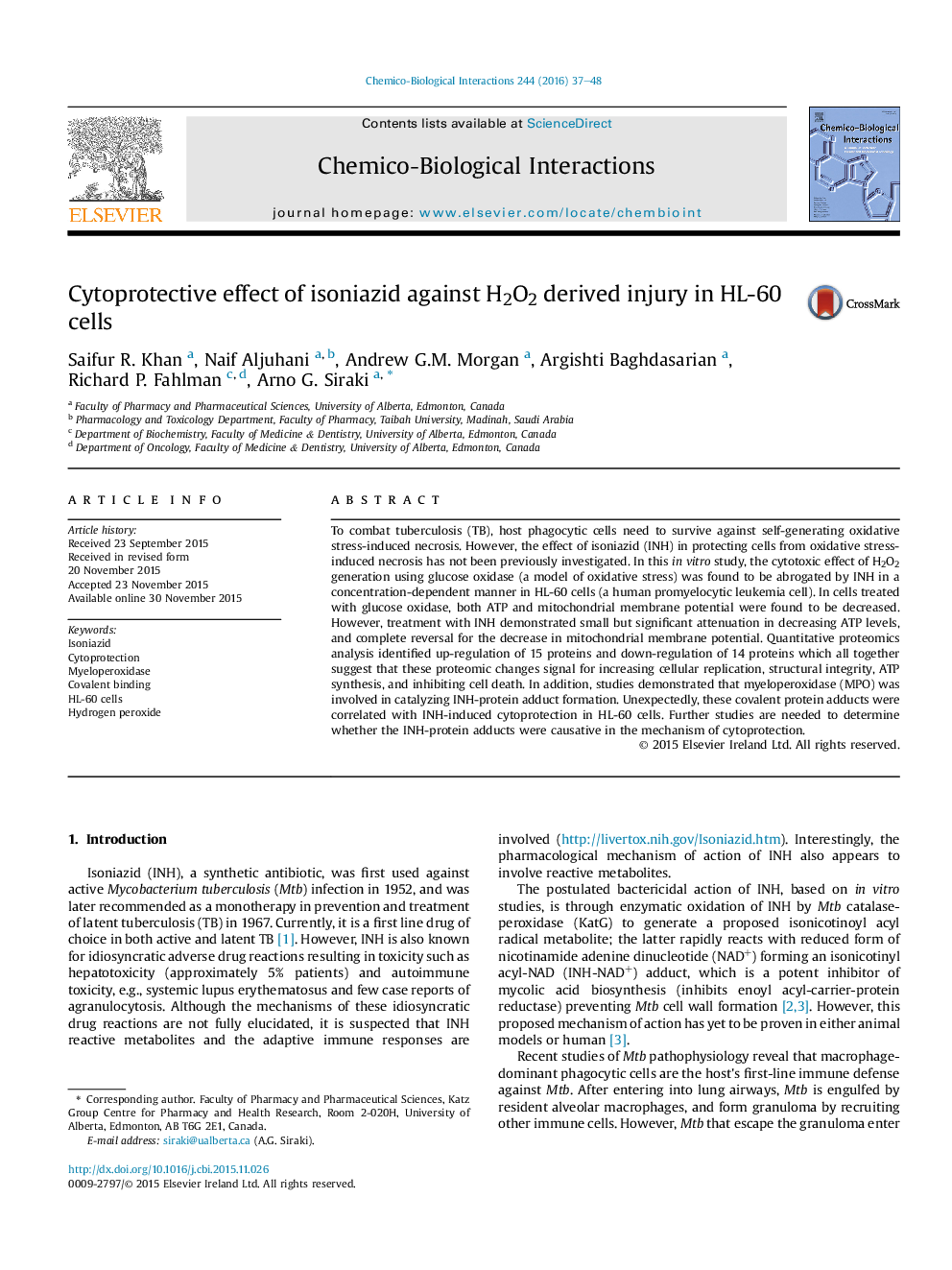| کد مقاله | کد نشریه | سال انتشار | مقاله انگلیسی | نسخه تمام متن |
|---|---|---|---|---|
| 2580049 | 1561597 | 2016 | 12 صفحه PDF | دانلود رایگان |

• Isoniazid showed cytoprotection against H2O2-induced necrosis.
• Isoniazid prevented mitochondrial membrane potential decrease from H2O2.
• Isoniazid's protective effects correlated with isoniazid-protein adducts.
• Myeloperoxidase (MPO) catalyzed isoniazid-protein adduct formation.
To combat tuberculosis (TB), host phagocytic cells need to survive against self-generating oxidative stress-induced necrosis. However, the effect of isoniazid (INH) in protecting cells from oxidative stress-induced necrosis has not been previously investigated. In this in vitro study, the cytotoxic effect of H2O2 generation using glucose oxidase (a model of oxidative stress) was found to be abrogated by INH in a concentration-dependent manner in HL-60 cells (a human promyelocytic leukemia cell). In cells treated with glucose oxidase, both ATP and mitochondrial membrane potential were found to be decreased. However, treatment with INH demonstrated small but significant attenuation in decreasing ATP levels, and complete reversal for the decrease in mitochondrial membrane potential. Quantitative proteomics analysis identified up-regulation of 15 proteins and down-regulation of 14 proteins which all together suggest that these proteomic changes signal for increasing cellular replication, structural integrity, ATP synthesis, and inhibiting cell death. In addition, studies demonstrated that myeloperoxidase (MPO) was involved in catalyzing INH-protein adduct formation. Unexpectedly, these covalent protein adducts were correlated with INH-induced cytoprotection in HL-60 cells. Further studies are needed to determine whether the INH-protein adducts were causative in the mechanism of cytoprotection.
Figure optionsDownload as PowerPoint slide
Journal: Chemico-Biological Interactions - Volume 244, 25 January 2016, Pages 37–48